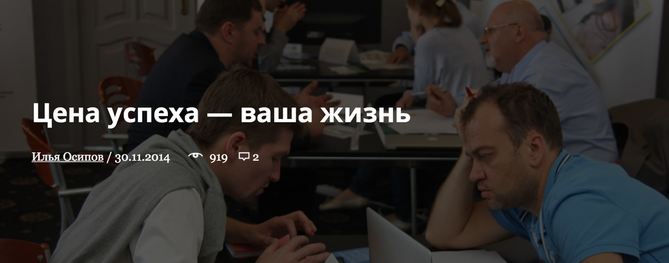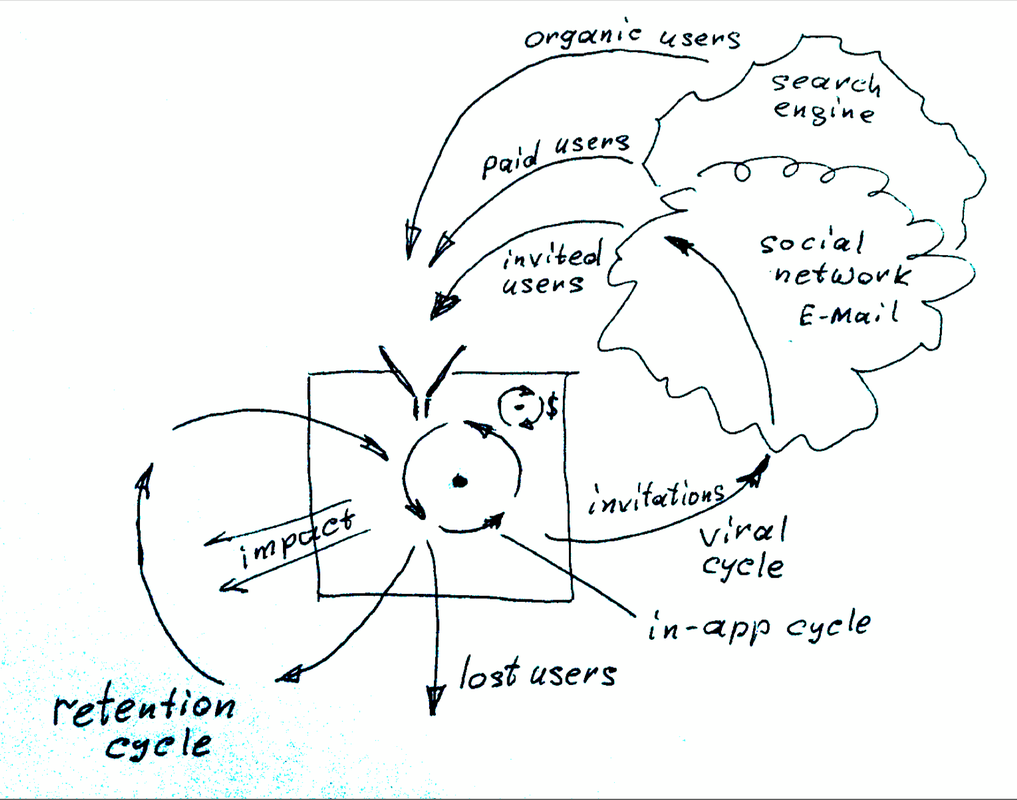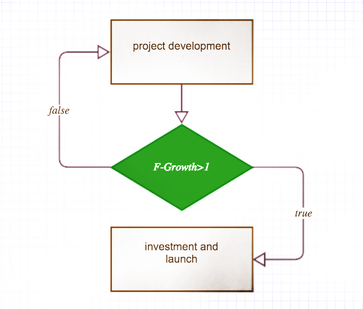- Project leader MDDay.ru asked me to write an article on the looming negative trend in relation to StartUp'ov in Russia.
- Original article here: "Цена успеха — ваша жизнь"
We have just seen the professional coming-out of Arkady Moreinis: he is shutting down his incubator. He says he is coming over to the dark side and will invest only in those projects that will pay right here in now.
I would advise Arkady to invest in a flower shop on the corner. It is a foolproof business and will pay off immediately.
These people make me wonder: what did they expect? That yesterday’s students would run in, and they would pick them up in festivals and competitions? That they would tell the beginners many clever things about their experience dating back to the 1990s or 2000s? That the newcomers would hang on their lips appreciatively, drink in the wisdom of ages and applaud furiously?
And they would give these young men some money, and then two out of ten would build up a new Google or a new Facebook, and the rest would make something a little below, like Ubera or AirBnB. Preferably, at once. Without more ado.
Great success is a rarity. Utmost rarity. And then, an investor is merely a structure serving an entrepreneur. Essentially, an investor is a person who hopes to snatch a share of another man’s success. One who wants to spend common money, which many may have, to buy a sparkle of magic that is won by the very few.
They say that new startuppers are mere day-dreamers. What is so bad about that? To me, it seems to be a premonition of the new trend brewing in Russia: who needs global ideas? Shouldn’t we make startups walk down from the clouds back to Earth? For example, invent something to buy sugar without standing in line. Or, say, digital coupons for food products and essential goods, under a municipal order. It is respectable and pays fast.
They say that real leaders with balls of steel will not join an accelerator or a small private fund. My dearest private investors, have you got balls of steel yourselves? We all understand that the price of success is your whole life. Is it so for startuppers only? Should investors retire on their laurels? Oh no, an investor has to consider hundreds of projects, and stay a fence-hanger for many years, and live with it, asking himself, “Have I lost every dime, or is there still hope to find at least one wonderful project?” And even then, he may fail to find it.
If you are not ready to undertake risks, why should you become an entrepreneur? An investor is a subspecies of an entrepreneur, if you still have not understood this.
Andrey Tukmanov, a wonderful guy, once said:
“Actually, investments allow building a global structure at once, without spending time on microscale activities. For example, the cat litter box cleaning service in the Central Administrative District of Moscow and the marketplace for litter box cleaners are two fundamentally different things in terms of their purposes, ideology, and structure.”
And another thing. If you have come down to Earth and stopped investing in “things of light”, if your decide on principle to invest in the projects that pay or will pay “here and now”, I would like to ask you, my dear Investor: “What the hell does the startupper, who can make money here and now, need you for? To behold your trendy glasses? Or listen to your how-I-grew-rich yarns?”
PS: I personally invest in IT projects. Not too many of them, about five all in all. But I would not like to talk about this. I do not know, whether something good will come out of them. The risks are monstrous. But then, what would one expect! It’s venture business.



